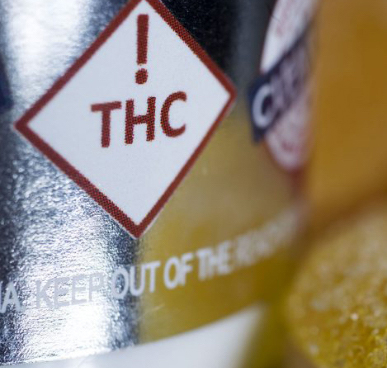Cannabis 101 in Colorado:
What to Know
Bongs, dabs, and vapes — oh my! Read on to get a crash course in cannabis/marijuana 101. Read on to get a crash course in cannabis 101 in Colorado: the basics of cannabis/marijuana and the most common methods of cannabis use in Colorado.
What is Cannabis?
Let’s start your cannabis 101 education with the basics. Cannabis, also known as marijuana, weed, pot, and other street names, comes from a plant called Cannabis sativa. This plant contains active components called cannabinoids, which affect one of the most important systems in the body: the endocannabinoid system. This system acts as a specialized communication network that supports various functions in the body, helping everything run smoothly.
Among the many cannabinoids in cannabis, the two most well-known and used components are THC (Tetrahydrocannabinol) and CBD (Cannabidiol).
THC is the primary psychoactive component of cannabis, which causes the feeling of being high or drugged. A few effects may include euphoria (feeling of intense happiness) and altered perception (changes in how you view or experience things).
CBD is a non-impairing component of cannabis, meaning it does not produce the ‘high’ effect.
Methods of cannabis use: How cannabis is used, from smokes to sweets.
From edibles to vaping, and lotions to concentrates, there are many different ways to use cannabis (also referred to as marijuana), and each one affects people differently. No matter which methods of cannabis use you choose, use responsibly.
Smoking
Cannabis can be smoked using a joint, pipe, or bong. This is the most common way people use cannabis.
Vaping
Vaporizers heat cannabis flower to release THC, the active ingredient in cannabis, and the vapor is inhaled.
Cannabis vape products typically contain some sort of THC concentrate. They can contain nicotine, cannabis (THC or CBD), or other substances like flavoring agents or additional chemicals. While vaping products have grown in popularity, we have seen outbreaks of lung illnesses linked to vaping. The long-term health effects of vaping are unknown, and as information on the illness emerges, our best advice is to not vape at all. Visit the Colorado Department of Public Health and Environment for specific updates on the vaping-associated illness outbreak.
Dabbing / Hash Oil
THC extract from cannabis, also called hash oil, shatter, or concentrates, can contain up to 60-90% THC and may take effect very quickly. When dabbing, the oil is heated, and the vapor is inhaled. We do not know much about how safe dabbing is, but we do know that it’s extremely potent and should not be used by anyone who has not used cannabis before.
Edibles
The effects of edibles, teas, and sodas can take longer to peak and last longer than smoking. Sometimes this can cause people to take too much. It can take up to four hours to feel the full effects; however, the effects can last up to 10 hours.
A single serving or dose of THC for retail cannabis in Colorado is 10 mg. In the Colorado retail market, edibles are available in different THC content, typically ranging from 5 mg to 10 mg. For instance, in a chocolate bar with ten squares, one square equals 10 mg. So, start low and go slow to avoid unwanted effects, especially if you’re new to edibles.
Topicals
Infused lotions, salves, and balms are sold for localized pain and inflammation related to skin problems or pain, but do not make the user feel high.
However, the lack of stringent safety regulations means that commercial products may contain harmful residual pesticides, heavy metals, and other unknown levels of harmful toxins.

How to tell if something
has THC in it.
This is one of the most important parts of your crash course in cannabis 101. Colorado cannabis law requires all cannabis products to include the universal caution symbol on packaging and on edible products themselves. Make sure you and your guests are familiar with this symbol so no one accidentally ingests cannabis. Teach your kids not to eat or drink anything with this symbol and always keep cannabis locked up, out of sight and out of reach.
Intoxicating Hemp
In Colorado, cannabis and hemp are treated differently. Hemp and cannabis come from the same plant, but hemp has much lower levels of THC. In Colorado, it is illegal to make or sell THC products that have been manufactured from hemp. Some manufacturers use a chemical process to convert non-impairing CBD found in hemp into intoxicating Delta-8 and Delta-10 THC molecules that are similar to what you would find in cannabis products sold at medical and recreational cannabis dispensaries in Colorado. These intoxicating hemp products can produce very similar intoxicating effects to cannabis products that contain THC.
Intoxicating hemp products are illegal in Colorado. They can pose a potential serious health risk because they are not regulated or tested for residual solvents (like sulfuric acid), pesticides, mold, or other potential contaminants in the same way other cannabis products are in Colorado when they are sold at medical and recreational retailers.
Now that you understand what to know about cannabis in Colorado, you can use this information to consume responsibly, if you choose to use cannabis.